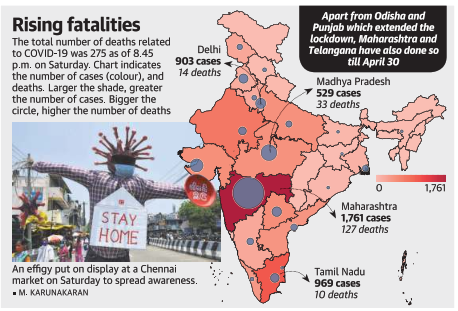12th April 2020 Current Affairs in English

12th April 2020 Current Affairs in English – Today Current affairs PDF link available below.
Dear Aspirants, we (Vetripadi.com team) have come with Daily Current affairs analysis. It is prepared to crack the various competitive exams. We are here to make sure your preparation easy. We will update the current affairs every day. It will help for both preliminary and mains (facts oriented with background information) for your preparation. We need you support.
VETRIPADI Daily Newsletter
வெற்றிப்படி.காம் | வெற்றிக்கு நீ படி!!!
Daily Current affairs for Competitive
Exams (TNPSC, SSC)
12th APRIL 2020
TABLE OF CONTENTS
- 14-day extension of lockdown likely
- Despite lockdown hurdles, sowing of summer crops up
- Don’t let the ‘social recession’ ruin your mental and physical
- Odd-even scheme started in Aligarh
- A.P. appoints former Madras HC judge as poll panel chief
- Karnataka’s first ‘sanitiser bus’ rolls out of scrapyard
- ‘8.2 lakh cases if there was no lockdown’
- Drug candidate, on trial, holds promise
- CM fund contributions to not qualify as CSR spend
- S. announces visa sanctions on nations refusing to accept citizens
- Virus kills Brazil tribal boy
- TRAI wants set top boxes to be made interoperable
- Study indicates sexspecific differences in immune system
- COVID19: younger patients develop fewer neutralising antibodies, study finds
1. 14-day extension of lockdown likely
Information in News
In four-hour video-conference with Chief Ministers, Prime Minister also hints at resumption of economic activity.
- The country could see a 14-day extension of the lockdown as that was the common demand of a large number of States including West Bengal. The Central government will be announcing guidelines for the same in the next couple of days.
- Andhra Pradesh Chief Minister Y.S. Jagan Mohan Reddy said zones within districts be colour coded and only the red zones undergo a containment lockdown.
- Punjab Chief Minister Captain Amarinder Singh asked for more funds for the rapid upgradation of health services in his State and a one-time increase in the borrowing limit from 3% to 4% of the State’s GDP by amending the Fiscal Responsibility and Budget Amendment Act, 2003.
Prime Minister Modi expressed distress at the instances of attacks on doctors and medical staff and at incidents of misbehaviour with students from the northeast and Kashmir. He underlined that such cases need to be dealt with firmly. He also spoke about the need to curb lockdown violations and ensure that social distancing is followed.
2. Despite lockdown hurdles, sowing of summer crops up
Information in News
- Pulses also see significant increase in early sowing despite lockdown limitations
- Early sowing of the summer rice crop has covered 37% more area than the same time the previous year, despite the COVID-19 lockdown limitations, the Agriculture Ministry data shows. This is the pre-monsoon sowing of paddy, with the major kharif crop sowing to be done after the rains begin in June.
- Overall sowing of summer crops including rice, pulses, coarse cereals and oil seeds is about 31% higher than usual. In total, 48.8 lakh hectares have been sown so far.
- The Centre has exempted agricultural activity from the lockdown restrictions and has also taken steps to ensure availability of fertilizers and pesticides for the coming season.
| Rabi | Kharif | Zaid |
| Winter cropping season is known as Rabi. | Wet summer cropping season is known as kharif. | Dry summer cropping season is known as Zaid. |
| Rabi crops are sown in winter from October to December.
|
Kharif crops are grown with the Onset of monsoon in June. | Zaid is the short intervening cropping season in between Rabi and Kharif season. |
| The crops are harvested in summer from April to June. | The crops are harvested in September to October. | The crops are grown in summer months (March to May) |
| Availability of precipitation during winter months due to western disturbances help in the success of these crops. | These crops have high water requirement either from monsoon rain or by irrigation. | They are irrigated crops. |
| Wheat, barley, peas, gram and mustard are examples of crops growing in Rabi season. | Paddy, maize, jowar, bajra, tur (arhar) moong, urad, cotton, jute, groundnut and soyabean are examples. | Watermelon, muskmelon, cucumber, vegetables and fodder crops are examples of crops growing in Zaid season. |
| They are grown in Punjab, Haryana, Himachal Pradesh, Uttarakhand and Uttar Pradesh. | They are grown in Assam, West Bengal, Coastal regions of Orissa, Andra Pradesh. | Sugarcane almost takes a year to grow. |
3. Don’t let the ‘social recession’ ruin your mental and physical
Information in News
- Research suggests that social isolation can trigger increased heart rate, muscle tension, and lead to chronic conditions such as hypertension.
- Just after a few weeks of social distancing and self-isolation because of COVID-19, we have noticed the decline in our social interactions and might have felt the change in our mental and physical health. It is being called the ‘social recession’ — a collapse in our social contacts, matching the economic recession that is looming beyond COVID-19.

The health risks
- Both loneliness (the feeling of being alone) and social isolation (physical state of being alone) can trigger a cascade of stress hormones that produce well-orchestrated physiological changes like increased heart rate, increased muscle tension and thickening of blood. Together these physiological changes are called the fight-or-flight response, because it has evolved as a survival mechanism enabling us to cope with physical and psychological threats.
- A recent meta-analysis published in Neuroscience and Biobehavioral Reviews revealed that people who are more socially isolated have higher levels of C-reactive protein (CRP) and fibrinogen (a soluble protein that helps blood to clot), both of which are associated with chronic inflammation and poor physical and mental health.
- Another oft-cited study in Perspectives on Psychological Science indicated that lack of social connection and living alone can be detrimental to a person’s health, respectively increasing mortality risk by 29% and 32%.
- Feelings are so idiosyncratic that it is often hard to gauge how one is feeling at a particular time.
- Chronic loneliness can manifest at any age and in many forms, from a simple feeling of exhaustion and fogginess, to interrupted sleep patterns, decreased appetite, body ache and pains; to feelings of anxiousness.
- Good news is, these signs disappear as soon as the quality and diversity of our social interaction improve.
Coping with isolation
- While there are no quick fix solutions to deal with increasing anxiety due to social isolation, there are ways we can smarten our approach to deal with it.
- It is important to know that the whole world is in the same state as us, and we are all in this together.
- Use this time to establish forgotten connections via technology and catch up with friends and family whom you may have been putting on the back burner because of your busy schedule.
- Most importantly, put the focus back on your self-care, eat well, exercise regularly, find ways to calm and focus yourself.
4. Odd-even scheme started in Aligarh
Information in News
The Aligarh administration has drawn inspiration from Delhi government to enforce the lock down effectively in the city. Like Delhi tried to curb pollution by using the odd-even scheme for vehicle.
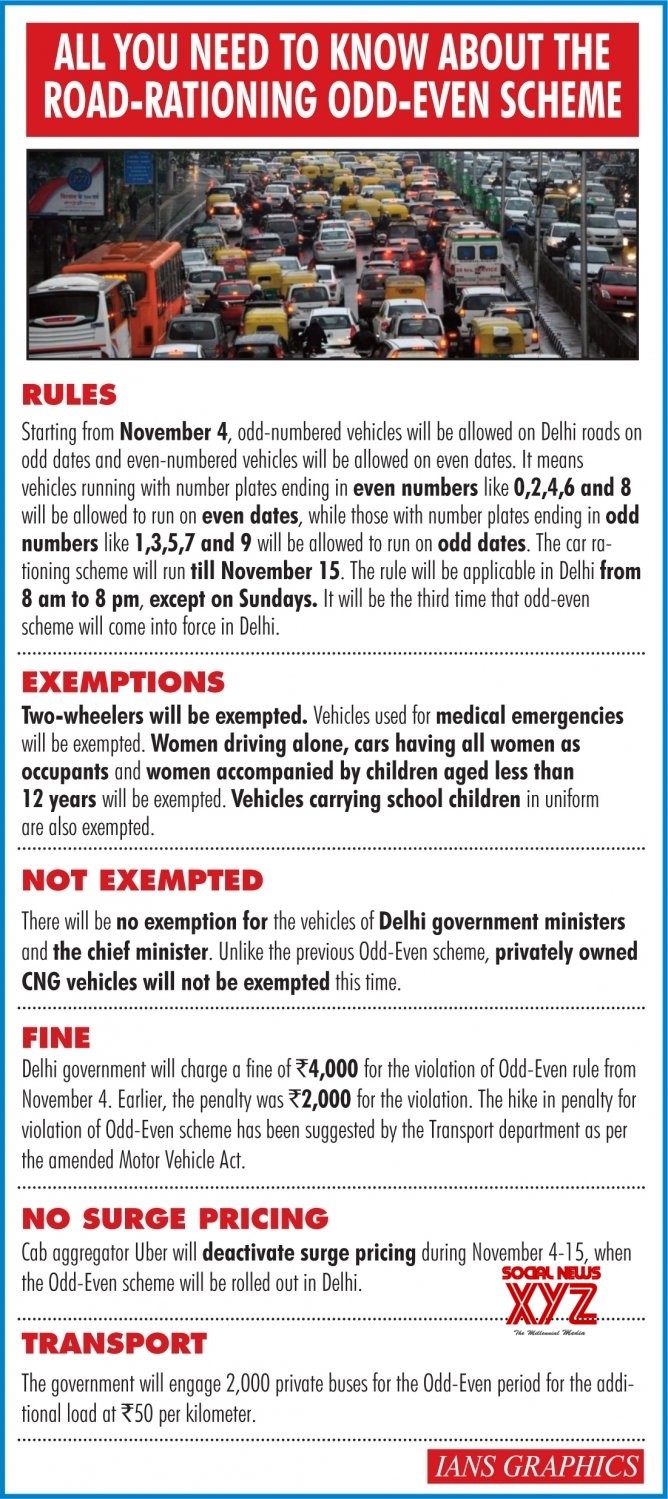
5. A.P. appoints former Madras HC judge as poll panel chief
Information in News
The YSR Congress government in Andhra Pradesh on Friday abruptly removed State Election Commissioner N Ramesh Kumar from the post by promulgating an Ordinance, amending the AP Panchayat Raj Act, 1994, curtailing the tenure of the SEC to three years from five.
In pursuance of the promulgation of Ordinance No.5 of 2020, Dr N Ramesh Kumar, IAS (Retd), the incumbent State Election Commissioner ceases to hold the office of State Election Commissioner on and with effect from 10.04.2020,” Panchayat Raj and Rural Development Department Principal Secretary Gopal Krishna Dwivedi said in an order.
The government issued three confidential orders to this effect,
- A retired judge of a High Court would henceforth be eligible for appointment as the State Election Commissioner.
- The State Election Commissioner shall be appointed by the Governor, on the recommendation of the state government. The State Election Commissioner will be a full-time officer and will have the status of a Judge of the High Court.
- The State Election Commissioner shall hold office for a term of three years and the incumbent shall also be entitled for re-appointment to another term of three years.
Justice Kanagaraj
- Justice Kanagaraj served as the Madras High Court judge for nine years and had several landmark judgements to his credit, particularly in cases related to the education sector and women and children’s safety.
- He graduated from the Madras Law College in 1972 and started practising as a member of the Salem Bar Association in 1973. He had the distinction of sitting in the Madurai Bench of the Madras HC, which is the only Bench created after 57 years of independence in the country, on its inaugural day.
- After retirement, Justice Kanagaraj resumed legal practice in the Supreme Court where he had been a designated senior advocate.
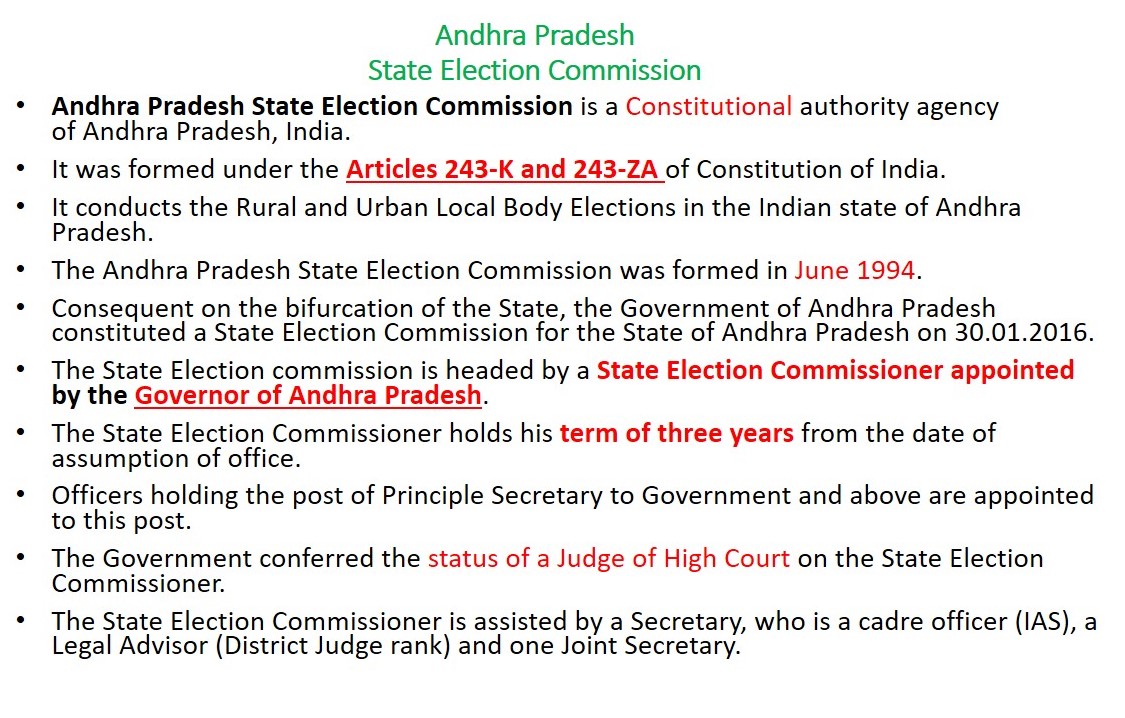
6. Karnataka’s first ‘sanitiser bus’ rolls out of scrapyard
Information in News
- The Karnataka State Road Transport Corporation (KSRTC) is converting its old buses that were slated to be scrapped into ‘sanitizer buses’ to disinfect people in public places. On Saturday, one such bus was launched in the city.
- KSRTC Managing Director Shivayogi C. Kalasad said the sanitizer buses branded as ‘Sarige Sanjeevini’ will be operated in the city limits for the benefit of police personnel, health workers, pourakarmikas and others who are carrying out essential services during the lockdown.
- Can’t say that the sanitizer buses will completely disinfect people. They have to follow other measures such as maintaining personal hygiene, washing hands, etc. This is one of the proactive measures taken by the corporation.
- The bus was modified at the Central Workshop of KSRTC at a cost of ₹20,000.
- Modifications include installation of sprinklers. People need to enter from the front door and exit via the rear end to get disinfected.

7. ‘8.2 lakh cases if there was no lockdown
Information in News
- The Indian Council of Medical Research (ICMR) — the technical arm of the Ministry that is overseeing testing and epidemiology, displayed a graph that showed three curves:

- One a red curve, denoting neither lockdown nor containment in place, that steeply rose to 2,08,544 cases onApril 9 (and with a note that it would extend to 8.2 lakh by April 15)
- A blue, gentler curve that rose to 45,370 by April 11 (and 1.2 lakh cases by April 15), the blue indicating the situation with containment measures but no lockdown and
- The final green line indicating the 7,447 cases at present –Lockdown and containment measures are important to fight COVID-19.
- Determining the rate of spread of infectious disease is different from extrapolating a given number of cases at an initial point and assuming a particular rate of growth and plugging it into an exponential mathematical equation.
- The curves assume a constant rate of growth, which is not what we’ve seen how the cases increase in India, or anywhere else in the world,
- Estimating the growth in cases requires knowing an R0 [reproduction number that denotes how many an infected person will further infect] and that can’t be derived from what we now have.”
- India should have focussed on finding transmission in the community and quarantining instead of “border control” because of the large uncertainty in detecting asymptomatic travellers harbouring the infection and becoming spreaders.
- 40% of those with severe respiratory illnesses sampled and detected with COVID-19 could not have their contact history established.
The government said it was containing the wide spread of the disease by establishing containment zones. In Agra, when the first case was isolated, a 3-kilometre zone was considered a ‘containment zone’ and a 5-kilometre zone was a further buffer zone where the movement was regulated and suspects were traced, quarantined and isolated.
8. Drug candidate, on trial, holds promise
Information in News
- A recent article published in the journal Science has shown that the already-promising drug candidate remdesivir, on trial now, exhibits promising activity against the COVID-19 causing virus and might work well in retarding virus replication.
- The SARS-CoV-2 virus exists as a mere strand of RNA and it requires a host to replicate. Scientists have discovered that the active site of RDRp shows striking similarities with the Polio Virus and the Hepatitis C virus.
- Using that knowledge, they have tried to use known drug candidates that work in that RDRp environment and work back to see if they are effective with the novel coronavirus.
- They also showed exactly where on the RNA dependent RNA polymerase — the main machinery to form strands of RNA — that this drug will bind with.
- Remdesivir, a nucleotide analogue, then acts as part of the growing RNA chain, fooling the virus into believing it is replicating, and thereby stops true replication.
“Structure of the RNA-dependent RNA polymerase (RDRp) from COVID-19 virus” Yan GAO Et Al, a group of researchers from various institutes in China and one in Australia, describes the biophysical and molecular interactions between COVID-19 virus RDRp and the antiviral drug remdesvir. “The findings highlight the fact that virus replication inhibitors hold promise and that the virus enzyme protein nsp12 represents a high value target to develop novel therapies for treating COVID-19 patients,”
The RNA polymerase is what is used to replicate. Here, it began with the identification of similarities in viruses with which we are already familiar — Polio Virus and HCV. If the binding happens with the drug, virus proliferation can be reduced. Then, the stress on the immune system too will come down. This can reduce, to a large extent, the number of people slipping into a critical stage, having a positive impact on mortality and survival rates.
The good news is that these candidates that seem to work well have already been tested, the safety and efficacy has been proven for other usage, Dr. Dhanasekaran adds. The study indicates sofosbuvir, along with remdesivir as probable candidates. Sofosbuvir is already being made in India to treat Hepatitis C. Currently, remdesivir, which is made by the American pharma company Gilead Sciences, is not available in India.
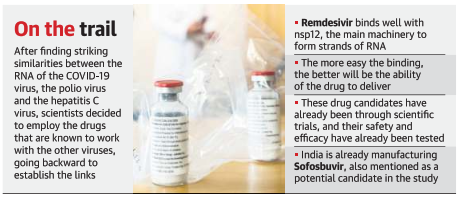
9. CM fund contributions to not qualify as CSR spend
Information in News
The Ministry of Commerce has clarified that the contributions to the Chief Minister’s Relief Fund or the State relief fund will not qualify as Corporate Social Responsibility expenditure, while any donation to the PM CARES Fund will.
- The Chief Minister’s Relief Fund’ or ‘State Relief Fund for COVID-19’ is not included in Schedule VII of the Companies Act, 2013, and therefore any contribution to such funds shall not qualify as admissible CSR expenditure,” it has said in a circular.
- The circular has said donations to the State Disaster Management Authority to combat COVID-19 can be counted as admissible CSR expenditure.
CPI(M) general secretary Sitaram Yechury flagged the circular on Twitter and said it was discriminatory and went against the constitutional principle of federalism. This is Cooperative Federalism. “States are at the forefront of this battle to contain the spread of Covid-19, and they are being strangulated by the Centre in this fight,” he said.He sought an immediate amendment to Schedule VII of the Companies Act to permit the States to access these funds which could save millions of lives.
Opaque PMCARES is CSR but not CM relief fund! States are leading the COVID war.
PMCARES fund
- It will be the Public charitable trust headed by Prime Minster and Members include The Defense minister, The Home Minster and The Finance Minister.
- It accepts Micro Donations It will strengthen disaster management capacities and encourage research on protecting citizens.
- The Ministry of Corporate Affairs has clarified that contributions by companies towards the PM-CARES Fund will count towards mandatory Corporate Social Responsibility
- Under the Companies Act, 2013, companies with aminimum net worth of Rs 500 crore or turnover of Rs 1,000 crore, or net profit of Rs 5 crore are required to spend at least 2% of their average profit for the previous three years on CSR activities every year.
- The term “Corporate Social Responsibility” in general can be referred to as a corporate initiative to assess and take responsibility for the company’s effects on the environment and impact on social welfare.
- Features of PM-CARES fund
- Exempted from tax under Section 80(G) of Income Tax Act.
- The Fund is held by the State Bank of India.Corporate Social Responsibility (CSR)
- The term “Corporate Social Responsibility” in general can be referred to as corporate initiative to assess and take responsibility for the company’s effects on the environmentand impact on social welfare.
- In India, the concept of CSR is governed by clause 135 of the Companies Act, 2013.
- India is the first country in the world to mandate CSR spendingalong with a framework to identify potential CSR activities.
- The CSR provisions within the Act is applicableto companies with an annual turnover of 1,000 crore and more, or a net worth of Rs. 500 crore and more, or a net profit of Rs. 5 crore and more.
- The Act requires companies to setup a CSR committee which shall recommend a Corporate Social Responsibility Policy to the Board of Directors and also monitor the same from time to time.
- The Act encourages companies to spend 2% of their average net profit in the previous three yearson CSR activities.
- The indicative activities, which can be undertaken by a company under CSR, have been specified under Schedule VII of the Act.
- The activities include:
- Eradicating extreme hunger and poverty,
- Promotion of education, gender equality and empowering women,
- Combating Human Immunodeficiency Virus, Acquired Immune Deficiency Syndrome and other diseases,
- Ensuring environmental sustainability;
- Contribution to the Prime Minister’s National Relief Fundor any other fund set up by the Central Government or the State Governments for socio-economic development and relief and funds for the welfare of the Scheduled Castes, the Scheduled Tribes, other backward classes, minorities and women etc.
-
10. U.S. announces visa sanctions on nations refusing to accept citizens
Information in News
- The Secretary of Homeland Security shall inform the Secretary of State, “… if any government of a foreign country denies or unreasonably delays the acceptance of aliens who are citizens, subjects, nationals, or residents of that country after being asked to accept those aliens, and if such denial or delay is impeding operations of the Department of Homeland Security necessary to respond to the ongoing pandemic caused by SARS-CoV-2.
- Within seven days of receiving such a notice from Homeland Security, the Secretary of State is required to initiate a plan to impose visa sanctions. Sanctions shall end when the Secretary of Homeland Security certifies that the host countries are accepting their nationals.
11. Virus kills Brazil tribal boy
Information in News
- A Yanomami indigenous boy has died after contracting COVID-19, authorities in Brazil said on Friday, raising fears for the Amazon tribe, which is known for its vulnerability to disease. The 15-year-old boy, the first Yanomami to be diagnosed with the virus.
- Brazil is home to an estimated 8,00,000 indigenous people from more than 300 ethnic groups. The Yanomami number around 27,000. The boy was studying to become a teacher in the indigenous reserve of Boqueirao.

-
Yanomami Tribes
- The Yanomami are the largest relatively isolated tribe in South America.
- The Yanomami people live in large circular and communal houses called Yanos or Shabonos.
- They live in the rainforests and mountainous regions of Northern Brazil and Southern Venezuela.
The gold rush and genocide
- During the 1980s, the Yanomami suffered immensely when up to 40,000 Brazilian gold-miners invaded their land. The miners destroyed many villages and exposed them to diseases.
After a long international campaign led by Davi Kopenawa Yanomami, Survival and the CCPY (Pro Yanomami Commission), Yanomami land in Brazil was finally demarcated as the ‘Yanomami Park’ in 1992 and the miners were expelled.
12.TRAI wants set top boxes to be made interoperable
Information in News
- The Telecom Regulatory Authority of India has recommended that all set top boxes (STBs) in the country must be interoperable, meaning that consumers should be able to use the same STB across different DTH or cable TV providers.
- The lack of interoperability of set top boxes between different service providers not only deprives the customer of the freedom to change her/his service provider, but also creates a hindrance to technological innovation, improvement in service quality, and the overall sector growth
- It noted that while the STBs deployed in the cable TV networks are non-interoperable, those by direct-to-home (DTH) players complied with licence conditions to support common interface module based interoperability. However, in practice, even in the DTH segment the STBs are not readily interoperable.
- Noting that there are technical and commercial constraints to the universal STB, it added that the interoperability should be platform-specific, i.e., STBs are interoperable within the cable TV segment and similarly within the DTH segment.
- TRAI also recommended that a coordination committee be set up by the I&B Ministry to steer implementation of revised STB standards for both the DTH and the cable TV segments.
- Further, the committee may maintain continuous oversight for setting up of the digital TV standards by BIS to provide for Digital Video Broadcasting Common Interface Plus (DVB CI+) 2.0 port based on ETSI (European Telecommunications Standards Institute) TS 103 605 standards and to have provision for reception of both DTH and cable TV signals.
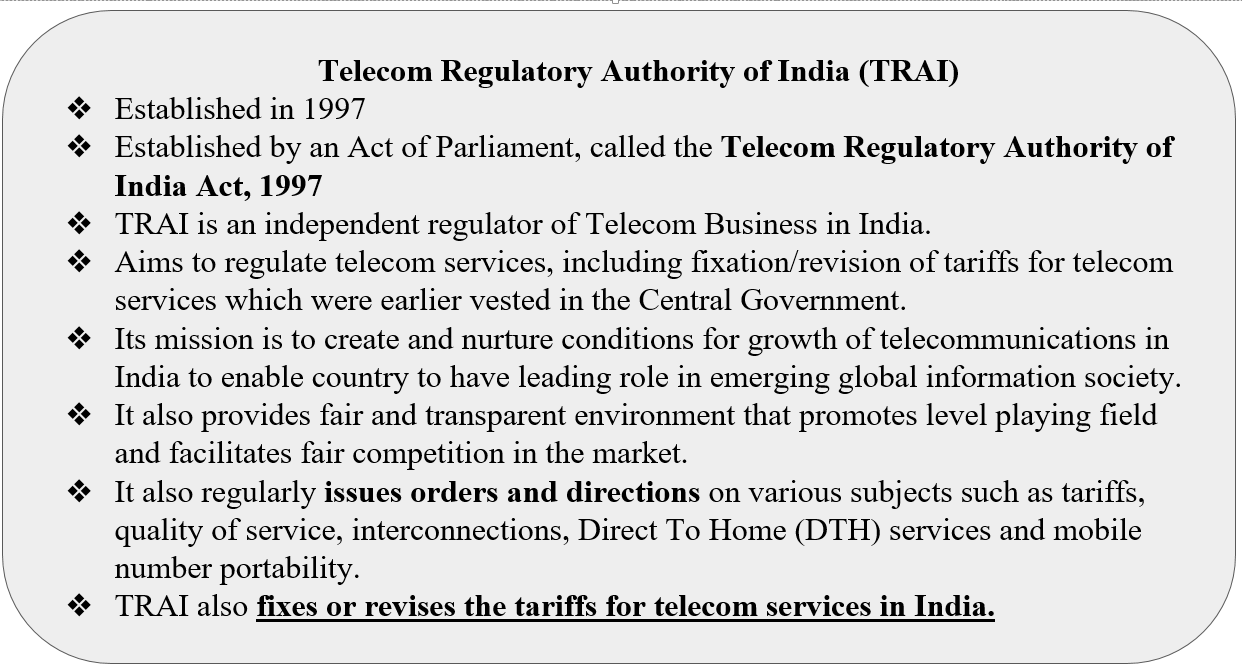
13. Study indicates sexspecific differences in immune system
Information in News
A study led by researchers from Australia finds crucial differences in the way the immune system acting in the body fat of male and female mice operates.
- Visceral adipose tissue is fat tissue that is found in the abdominal region, surrounding various organs. This includes perigonadal VAT which surrounds the ovaries in females and testes in males, which is what the researchers studied.
Controlling immune response
- The perigonadal VAT taken from male mice had many more regulatory T cells (Treg) than that of female mice. These cells play a role in controlling immune response to the self and external cells, thereby protecting the body from autoimmune diseases such as rheumatoid arthritis or lupus.
- The Treg cells in the male VAT also showed a distinct phenotype, functional parameters and gene expression pattern compared to Treg cells in female VAT.
- They found elevated expression of inflammatory genes in male VAT. A special population of stromal cells that made the cytokine IL-33 was exclusive to male VAT.
Historically, visceral adipose tissue was simply regarded as an energy storage [organ]. Many studies, however, have highlighted its endocrine function. Visceral adipose tissue has an endocrine function, meaning it secretes adipokines and hormones that play key roles in energy balance and metabolism.
- It is known that men (in a similar manner to male mice) are more susceptible to metabolic diseases such as type 2 diabetes. “This is linked to higher adipose tissue inflammation in men compared to women, again similar to mice,
- Finally, we have previously shown that human adipose tissue (omental) harbours Treg cells of a phenotype similar to the one found in mice.” Thus, it is likely that the difference in Treg cell distribution seen in the visceral adipose tissue of male and female mice would hold true in humans.
- For instance when studying metabolic disease, mostly male mice are used. This study implies that findings of such a test will not hold equally good for males and females.
Study reveals
- Until the recent past, for clinical trials mostly men were recruited although it is clear that disease susceptibility and response to drugs are different.
- In this context tailoring drugs to gender is a possibility in the future. We will continue to explore the role of sex hormones in metabolism and other inflammatory and autoimmune diseases.”

14. COVID19: younger patients develop fewer neutralising antibodies, study finds
Information in News
But older patients who had more neutralising antibodies did not recover faster
Analysis of blood samples from 175 patients with mild COVID-19 disease who were discharged from the Shanghai Public Health Clinical Centre as on February 26 revealed that about 30% of patients had unexpectedly low levels of antibodies against novel coronavirus (SARS-CoV-2). Ten patients had such low levels of neutralising antibodies that these could not be detected, while two patients showed very high levels.
- The study threw up another surprise — the plasma of elderly and middle-age patients had significantly higher amount of neutralising antibodies and spike-binding antibodies than young patients.
- The median age of the patients was 50 years and the median length of hospital stay was 16 days and median disease duration was 21 days.
Disease duration
- Though about 30% of patients failed to develop high amounts of neutralising antibodies even after recovering from COVID-19 disease, the disease duration was not longer than older patients.
- Likewise, older patients who had more neutralising antibodies did not recover faster. So immaterial of the amount of neutralising antibodies found, both young and old patients took the same time to recover.
- The amount of neutralising antibodies generated in response to vaccination determines the efficacy of the vaccine in protecting against the virus. In this case, if infection with actual virus has not resulted in eliciting strong antibody response and hence elevated neutralising antibodies, it is not clear if the vaccine
which had killed or weakened viruses would be able to produce high amounts of antibodies.
- But the researchers were not able to detect viral DNA in the blood samples collected, and information about viral load was not available for all the patients. So it is not known if the young patients had lower viral load thus resulting in lower amount of neutralising antibodies. “This study is preliminary.
- The team led by Jinghe Huang was able to detect coronavirus-specific neutralising antibodies 10-15 days after onset of the disease, and the level remained stable thereafter.
Mild symptoms
- The efficacy of passive antibody therapy, otherwise called as convalescent plasma therapy, relies on the concentration of neutralising antibodies in the plasma. The low levels of neutralising antibodies in younger patients who have recovered from the disease strongly suggest that convalescent plasma should be titrated before being used for therapy.
- The authors wonder if the low levels of neutralising antibodies in about 30% of patients would put them at risk of infection rebound or reinfection and suggest that further studies are undertaken to understand this.
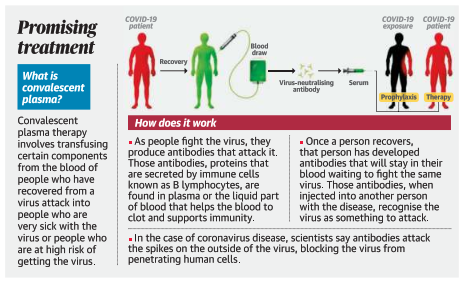
Immune response
- The higher amounts of neutralising antibodies found in older patients may be due to “strong immune response” in aged people, the study suggests.
- But whether the elevated neutralising antibodies found in older people protect them from progression to severe and critical conditions is not known.
- But the world over, it has become clear that older COVID-19 patients are at higher risk of adverse disease outcomes. Studies carried out earlier using the SARS virus infection in aged macaques resulted in elevated immune responses, resulting in more severe pathology than younger adult macaques.
- The researchers also found that antibodies generated in response to novel coronavirus (SARS-CoV-2) could bind with 2003 SARS strains.
- However, the binding was not able to stop the SARS virus from replicating. This raises the possibility of developing a vaccine that might be effective against both novel coronavirus and the 2003 SARS virus.
PDF Download Here
Tags : current affairs 2020 100, current affairs 2020 jan, current affairs 2020 pdf, current affairs 2020 quiz, current affairs 2020 hindi, current affairs 2020 india, current affairs 2020 today, current affairs 2020 nigeria, current affairs 2020 questions, current affairs 2020 in tamil, current affairs 2020 gk today, current affairs 2020 in english, current affairs 2020 gd topics, current affairs 2020 pdf download, current affairs 2020 in hindi pdf, current affairs 2020 questions and answers, current affairs 2020 january in affairs cloud,TNPSC Current Affairs 2020, current affairs in tamil, best current affairs for tnpsc exams, tnpsc group 4 current affair, tnpsc group 2 current affairs, tnpsc group 2a current affairs, tnpsc group 1 current affairs, tnpsc current affairs 2019

